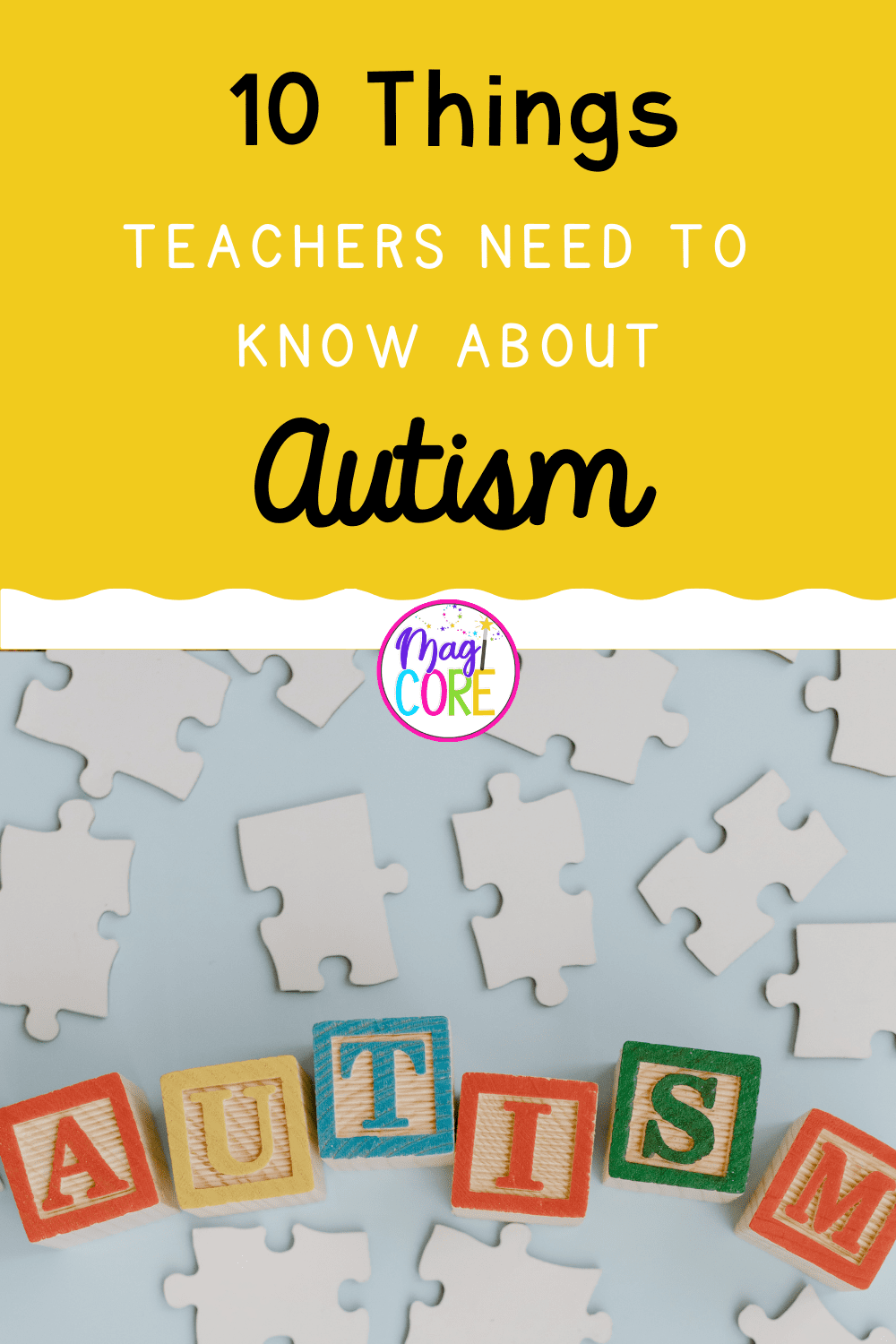As a teacher, I worked with many children on the autism spectrum. Although I learned a lot by working directly with these students, there are a lot of things about autism I can never understand. Izzy Lively is a lifestyle content creator for neurodivergent individuals who desperately want to live independently. She is sharing the ten things teachers need to know about autism. When she’s not creating content, you can find her walking her cat, binging TV, or stim dancing in her kitchen. Learn more about Izzy and living with autism at https://lemonandlively.com/autism/.
When you’re on the autism spectrum, you experience life differently. School is no exception, but so many students are being left behind because of autism stereotypes. Here are 10 things I wish my teachers had known about autism.
Most of your autistic students are not going to be in special education. They’re going to be in the classroom, both diagnosed and undiagnosed, because autism is not an intellectual disorder.
This means they’re not all going to have an Individualized Education Program (IEP). They could be the kids who always forget their homework, can never find anything, are often late to class, never raise their hand, and struggle to understand certain questions.
Impaired executive functioning and metacognition can result in losing everything, forgetting things, and reading comprehension.
Autistic students also may finish their work “too quickly”. If you know you have a student whose forte is finishing work before everyone else, consider giving them more challenging projects or letting them work ahead.
Recommending them for advanced placement may cause them to burn out and ignores the possibility that you’re just dealing with an autistic special interest or neurodivergent hyperfixation. It could do more harm than good.
Big, bright colors with poster-clad walls and a clock positioned behind the desks that students aren’t supposed to look at creates a “loud” environment. It is difficult to work in classrooms where the walls talk and you’re not allowed to see how much time is left.
Looking at the clock is no slight against you, it’s just part of a routine. Classrooms without clocks add to anxiety.
The ideal classroom would be blank, but non-autistic students may need stimulating classrooms. A compromise would be to keep the wall you teach in front of the most blank around the blackboard/whiteboard, which are also mostly blank.
The coolest thing a teacher ever did for me was give me the option before class to sit in the hall and work on the review packet instead of working it with the class. My classmates thought I was in trouble, but I was able to learn how I did best — without an overstimulated environment. My teacher did not know about my autism; it was just something she’d observed about me.
Providing written instructions in conjunction with verbal instructions would make a world of difference for students who have sensory processing issues or are autistic.
Real life doesn’t have closed captions you can read and use to help process verbal communication. Some students may turn to their textbooks to make up for lost instruction, but most will not or don’t have textbook access.
The kids doodling in their notebooks or on their work need the mental stimulation to help them stay focused.
Students who tap their pencils or bounce their knees are usually doing it subconsciously — not to annoy you, seem impatient or disrupt the class.
Not responding when called on, or needing you to repeat the question or explain, could actually be a sign that they’re struggling to process verbal communication. They may have continued ahead while their peers went off on a tangent or fallen behind due to the double empathy problem.
Autistic students may also laugh during inappropriate or stressful times. They may ask their peers what was said, either verbally or via notes. This isn’t to excuse such behavior — it’s crucial to know the routes autistic people may take in order to excel in school.
Too many autistic adults don’t find out that the experiences they had as kids are unique to their autism.
Pairing autistic students with classmates they don’t know opens us up to being bullied and taken advantage of.
On the other hand, autistic people may succeed at solo projects. They’re able to work at their own pace and put the project together how they like. If the topic is a special interest, they will even feel comfortable speaking about it in front of the class — provided the other students do not bully them.
When you see a student you know or think is autistic being treated differently by their classmates, the situation needs to be handled delicately. You can easily make the situation worse by reminding students of the zero tolerance policy.
If that same student is stimming more than usual or frustrated, speak to them calmly. Don’t indirectly call them out. Autistic people are three times more likely to commit suicide than their non-autistic peers.
Due to autistic masking, people on the autism spectrum hide their emotions well. In addition to depression, meltdowns are out of our control. If you make the bad situation worse, you could cause irreparable distress.
All behavior is communication.
The autistic community prefers identity-first language (IFL) over person-first (PFL) language by default.
Some autistic people do prefer PFL, but the general consensus in autistic culture is that IFL is the expected default.
If you ask a non-autistic person if they want to answer questions from the textbook or fill out a packet using the textbook, they might choose the packet.
If you ask an autistic person the same thing, they’re probably going to ask you if the packet contains the same questions as are in the textbook. “What’s the difference?”
That’s not a real choice. It’s still the questions from the textbook. Autistic people will see through the manipulation, think ill of classmates who don’t, and feel like you as a teacher don’t think they’re smart.
You might have to explain the same thing to your autistic students per each different circumstance. It’s not because they weren’t listening, it’s because this is a different circumstance.
So if you explained why talking during the moment of silence was inappropriate, you might have to explain why talking during an assembly by the principal is also inappropriate.
The most sensory disturbing situation in school is the pep rally, but attendance is mandatory unless the school has a detention policy.
What is the most minor thing someone can do to get detention during the pep rally so they don’t have to go to the pep rally, without phoning their parents?
If one of your students expresses that they dread going to the pep rally, and you have the power to keep them from going, offer them busy work. Ask the school librarian if that student can help out in the library during that time. Develop a rotation with your fellow teachers to create a “Cool Room” where students who prefer the quiet can chill, chat, and complete homework.
—
Accommodating autistic people isn’t a one-size-fits-all. An autism diagnosis takes three years on average. Since autism shows up differently in girls, female autistic students may go most of their lives before they’re diagnosed. They may never make it into Content Mastery, but that doesn’t mean they won’t need extra help.
The students that don’t look stereotypically autistic could indeed be autistic. Not every autistic person needs to be in a class for intellectually disabled people, but every autistic person does need equitable learning opportunities.
Every child is one caring adult away from a success story. ~John Shipp
If you are looking for a way for your students to learn more about autism, check out this Autism Video Lesson available exclusively on MagiCore Academy. You can access this and 800+ other interactive learning activities free for 10 days. Visit https://magicoreacademy.com to learn more.

We strive to create resources that empower teachers and transform student success. We create skill-focused resources that promote critical thinking, enhance student engagement, and incorporate diversity. Our goal is to develop the tools teachers need to reach their students and foster a lifetime of learning.

